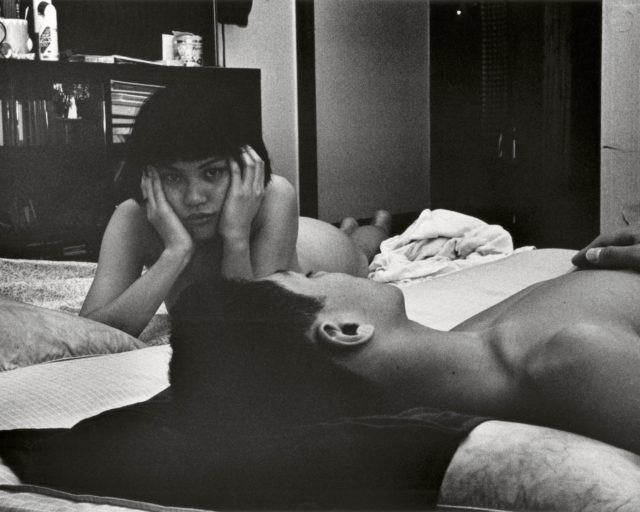The Photographer’s Hand in a Digital World

Matt Lipps, Models, 2016
© the artist
The J. Paul Getty Museum’s exhibition Cut! Paper Play in Contemporary Photography gathers together six artists whose work over the past decade is coping with an identity crisis in photography. In the nineteenth century, the daguerreotype offered jewel-like uniqueness to match that of painted portraits, while today, artists’ attention to (and even assault of) C-prints pits another sort of physicality against the mass dissolution hastened by digital process. Each of the six artists of Cut! leverages their handiwork against the anonymity of the apparatus. See, for instance, Photographers (2013), a large-format image by Matt Lipps: lining glass shelves like paper dolls are cutouts from the work of the great auteurs—a nude by Manuel Álvarez Bravo, a twisted tree by Edward Weston, a skull made of nude women by Philippe Halsman. The work glorifies the paper-ness of photography at a time when paper is less and less a factor. Nostalgia and appreciation intermingle, and Lipps’s mastery of color lighting and color printing techniques—the figures floating like crisp grayscale ghosts above an aquamarine wash—constitute less a deconstruction of and more an homage to the “straight photograph.” Likewise, Daniel Gordon’s still lifes of “fruit” and “vegetables” collaged into the round from chopped-up color photos inflate the medium into brilliant, volumetric space, only to collapse it again.

Daniel Gordon, Potatoes and Leeks, 2016
© the artist and courtesy M+B Gallery, Los Angeles
In this self-aware spirit, the photographers of Cut! uphold the medium’s investment in the significance/signification of even minor things. In a 2012 series shot in the Getty Research Institute’s archive, Thomas Demand zooms in on paper-and-plastic models by the architect John Lautner, making lush abstractions of their rust-red, dusty planes. Similarly, his impressively lush and fine-grained Landscape (2013) appears to glorify the sheer mundanity of a patch of ground cover. Yet what the image actually depicts—an intricate, life-size paper diorama—brings with it the untold work hours of Demand and his assistants, cutting and folding all those shades of green.

Soo Kim, Midnight Reykjavík #5, 2005
© the artist
Where the subject itself isn’t hand-rendered, the artist’s hand embellishes the mechanical result. Soo Kim creates intricate latticeworks from layered photographs of cities and wharves by making incisions according to the logic of the image—for instance, in Midnight Reykjavík #5 (2007), by excising the flat planes of walls and roofs. This subtractive collage thus maintains a relationship to the subject’s geometry, while rendering the glass a window; Kim’s landscapes are as aware of the wall as they are the frame, folding the structures they depict into the structures on which they hang. In comparison, optically ambiguous, geometric 3-D collages of cut photographs by Christiane Feser pop both visually and physically into space. Where this (faux) tromp l’oeil becomes its own virtue, clever formalism is given undue substance by calling it “play.”

Christopher Russell, Budget Decadence, 2008
© the artist
Indeed, it’s no great revelation on its own that the photographic process is plastic and fungible at all points. While many of these artists leverage the objecthood of the photograph to reach smart new territory, others seem to slash out blindly for a novel approach. Among a series of five prints of an interior window by Christopher Russell, variously augmented with razor points, dirt, and semen (only three are on view), is Budget Decadence (2008), an “Ultrachrome print hacked with meat cleaver.” Russell’s other selections nod to the artifacts of the medium, such as Explosion #31 (2014), in which he scratched tattered arabesques into a print of a lens flare, and Mountain XXIX (2017), where a cloth veil draped over a perfectly configured, high-end lens produced a gossamer blur. It’s hard to get excited about a photographer’s efforts to frustrate their own equipment, but worth noting that, even so, they keep making photographs.
Cut! Paper Play in Contemporary Photography is on view at the Getty, Los Angeles, through May 27, 2018.


























